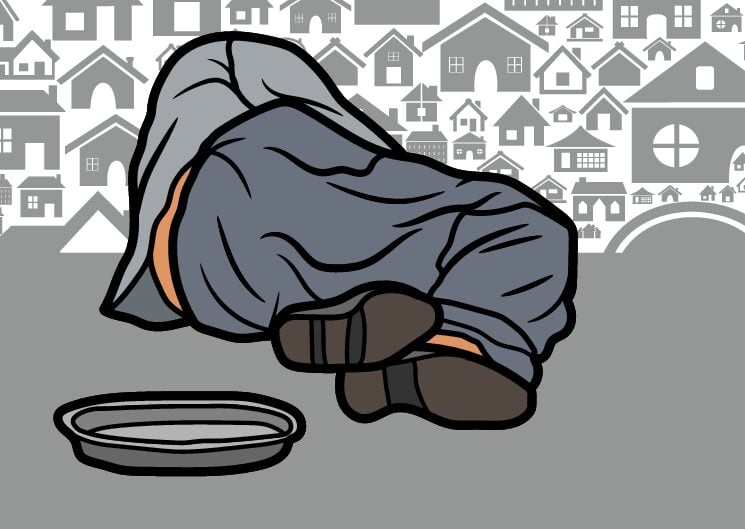The fact that one of the least populated countries on Earth contains the world’s second most expensive housing is a national calamity, and a stunning failure of public policy. Australia’s mess and how to fix it. Alan Kohler, The Quarterly Essay 2023
The 2-decade-long neglect of housing policy has, at every level of government, failed young Australians and those on low incomes. Housing costs are rising well beyond rates of income, home ownership rates are falling, affordable rentable properties are scarce and high rates of migration are worsening the crisis. 116,000 Australians experience homelessness on any given night and up to 2 million people aged 15 years and over are at risk of homelessness.
Federal Government recently committed to help deliver 30,000 new social and affordable rental houses over 5 years and numerous other measures to reach the target of 1.2 million new houses.
What else should be done:
- Complete a National Housing Strategy with objectives addressing all cost and supply issues, applying measures in taxation, budgeting and investing, and working for consistency in States-based measures. The Strategy to be monitored and reported on regularly.
- Invest in social housing for people at greatest risk of long-term homelessness.
- Invest in safe, permanent and supported housing, for people who have been homeless, medium to long term.
- Fund transition housing for people in crisis situations such as family violence
- Urge state governments to set an overall framework for land and housing supply by:
- working with state governments to set building regulations that can lower building costs but meet higher standards for net-zero emissionsincentivising supply of housing in inner and middle suburbs and increase density and diversity of housing types, with measures including land use planning amendments.encouraging consolidation of land parcels and the States to audit existing urban areas for potential medium density housing opportunities.
- reforming tenants’ rights, ending unfair evictions and rent increases tied to increases in the median wage
- Offer incentives for major build-to-rent developments in good locations
- Raise rent assistance by 40%, indexed in future to changes in rents so its value is maintained, as recommended by the Henry Tax Review. (The Government has agreed to a 15% increase.)
- Require universities to provide more affordable dormitory accommodation on campus for students.
Homelessness is a visible and extreme form of social exclusion and has severe adverse social, health, and economic consequences for people. In 2019, an estimated 2.2 million Australians had been without a permanent place to live at some point in their lives. Australian Institute of Health and Welfare
If an extra 50,000 homes were built each year for the next ten years, national home prices and rents would be 10-20% lower than otherwise. The Grattan Institute
The lack of affordable housing has at last been recognised by government as a major issue for many Australians and a plan is afoot to improve supply but it does not go far enough.
In 2023 Australia’s population grew by 600,000 whilst dwelling approvals were a mere 167,000. The stock of social housing, currently ~400,000 dwellings, barely grew in 20 years. Australia has just over 400 dwellings per 1,000 people, which is among the least housing stock per adult in the developed world.
Estimates of how many new homes will be required by 2030 range from 1 million to 2.7 million. The housing crisis was exacerbated by a post pandemic reduction in household sizes, creating a shortfall of ~20,000 homes.
For many young people it is a perfect storm of insecure and lower-paid employment, HECS debt repayments, the rising cost of housing generally, barriers to saving enough for a deposit on a home and the need for young people to rely on family for housing until well into their 20s. The longer young people are homeless the greater the risk of mental health issues and suicide.
The ABS found 122,494 persons were estimated to be experiencing homelessness on Census night 2021.
The Federal Government plan does not include abolition of negative gearing or halving capital gains tax as recommended by the Grattan Institute and other players, despite ALP election commitments in 2019 to do so. The $25b/year saved could have been spent on social housing, boosting the very modest proposal of 10,000 houses over 5 years and the rest coming on-stream through future funds.
The Federal Government proposal for the superannuation sector to invest in social housing is problemmatic, given the fact that their charter obliges funds to act in the best financial interests of their members and social housing will require substantial subsidy. A better idea would be incentives for affordable, large-scale, build-to-rent developments with long term leases.
References:
https://ministers.dss.gov.au/media-releases/12936
Homelessness and housing affordability in Australia – Australian Institute of Health and Welfare
https://www.aihw.gov.au/reports/australias-welfare/homelessness-and-homelessness-services
https://www.ahuri.edu.au/analysis/brief/what-are-real-costs-housing-crisis-australias-young-people
https://theconversation.com/super-funds-should-use-their-substantial-holdings-for-public-good-194443
Useful statistics
ABS Key housing statistics for Sept quarter 2023
- The total value of residential dwellings in Australia rose by $261.0 billion to $10,267.4 billion this quarter.
- The number of residential dwellings rose by 52,300 to 11,094,500 this quarter.
- The mean price of residential dwellings rose by $19,200 to $925,400 this quarter.
In the twelve months to September 2023, the MRI increased by 15.8 per cent, the highest annual increase since this Rental Report series began in 2000. (Victorian Rental Report for Sept Quarter)
- 122,494 people were estimated to be experiencing homelessness on Census night in 2021.
- Males made up 55.9% of people experiencing homelessness; females made up 44.1%.
- 23.0% of all people experiencing homelessness were aged from 12 to 24 years.

